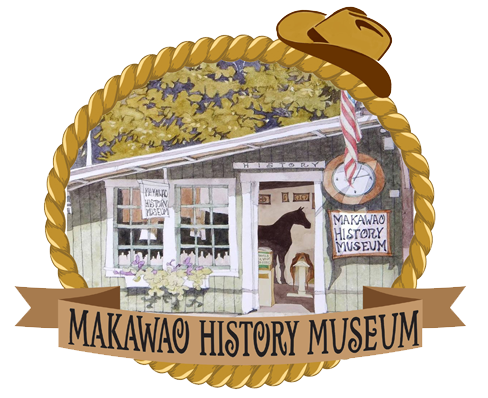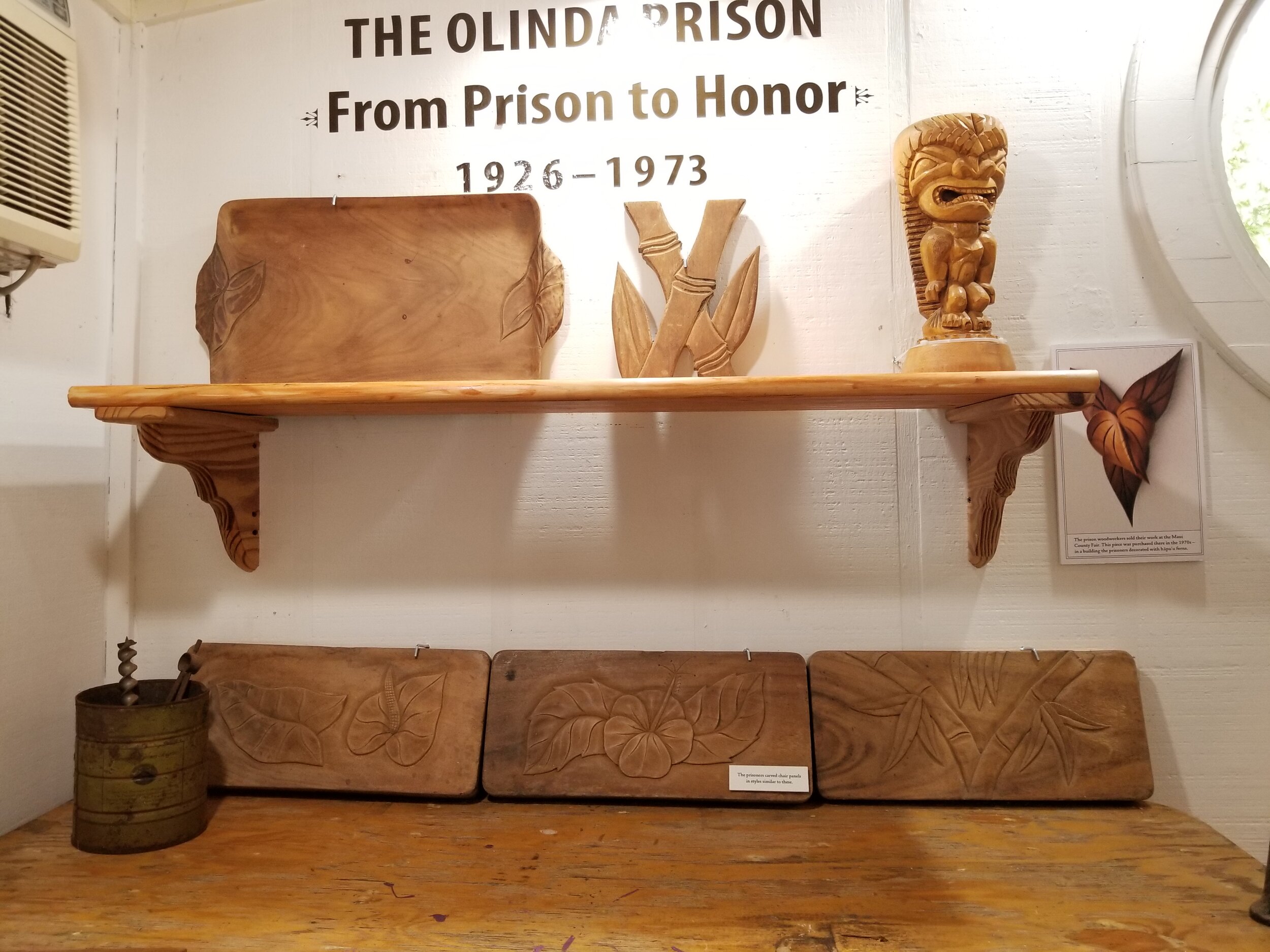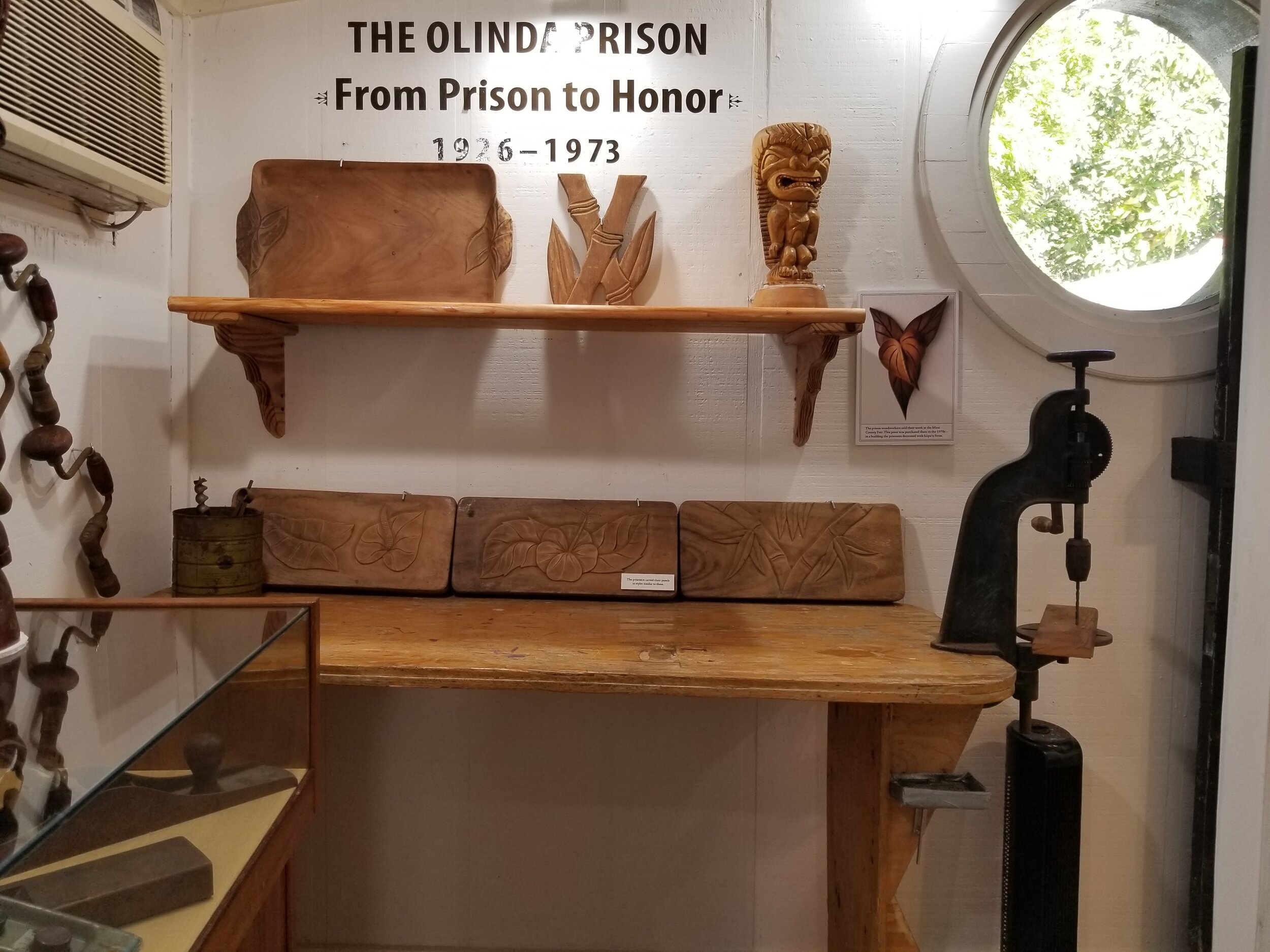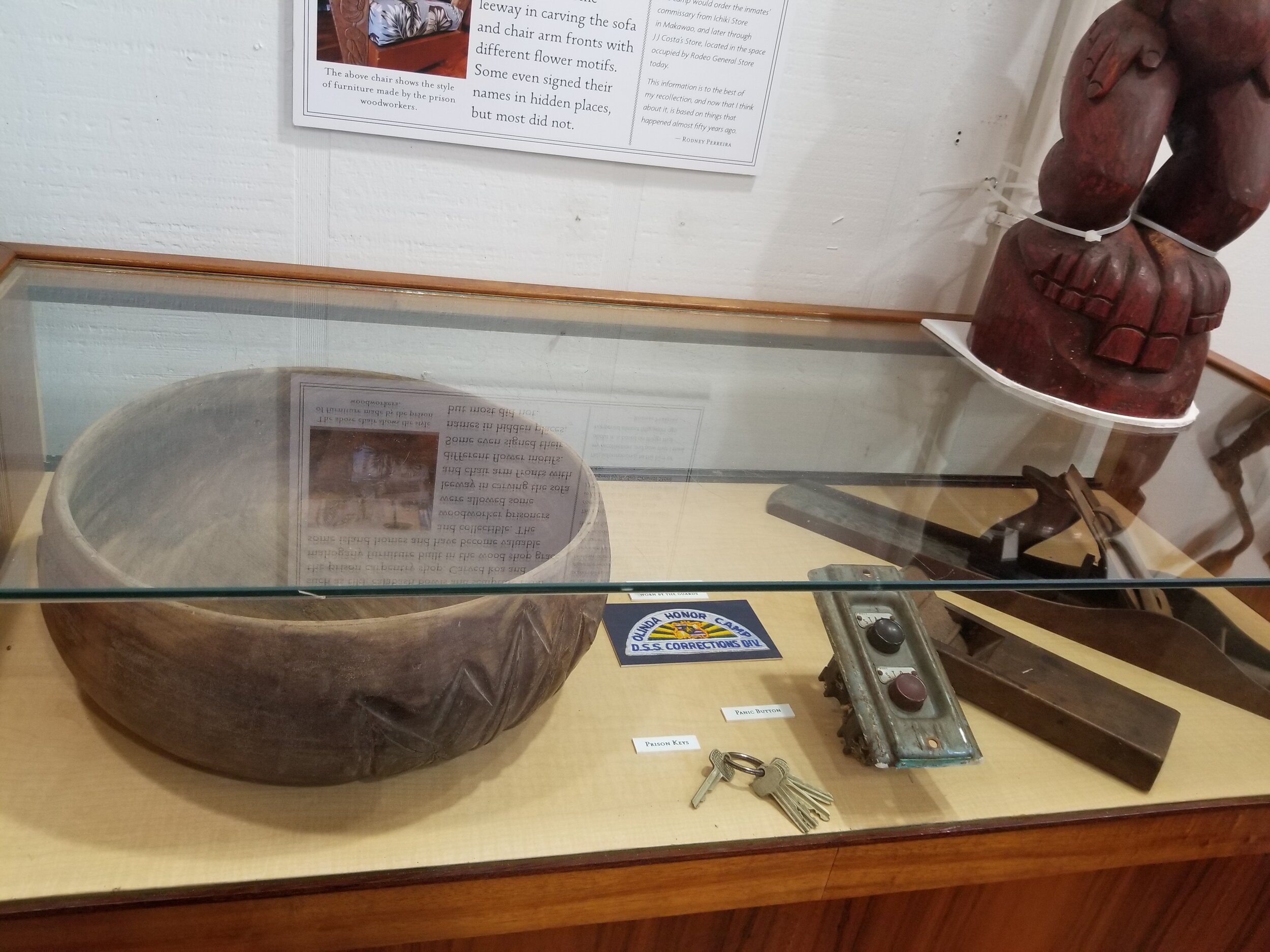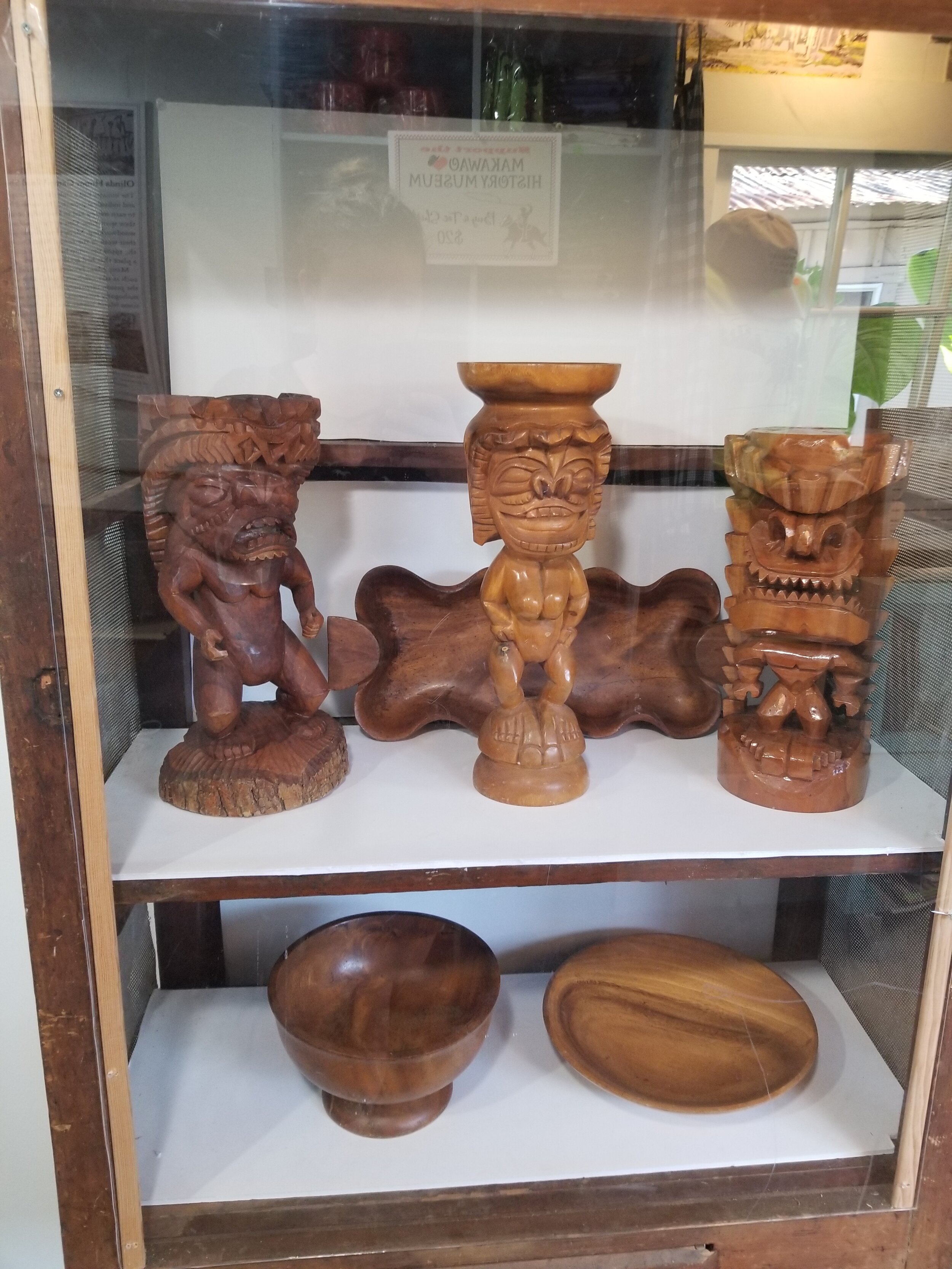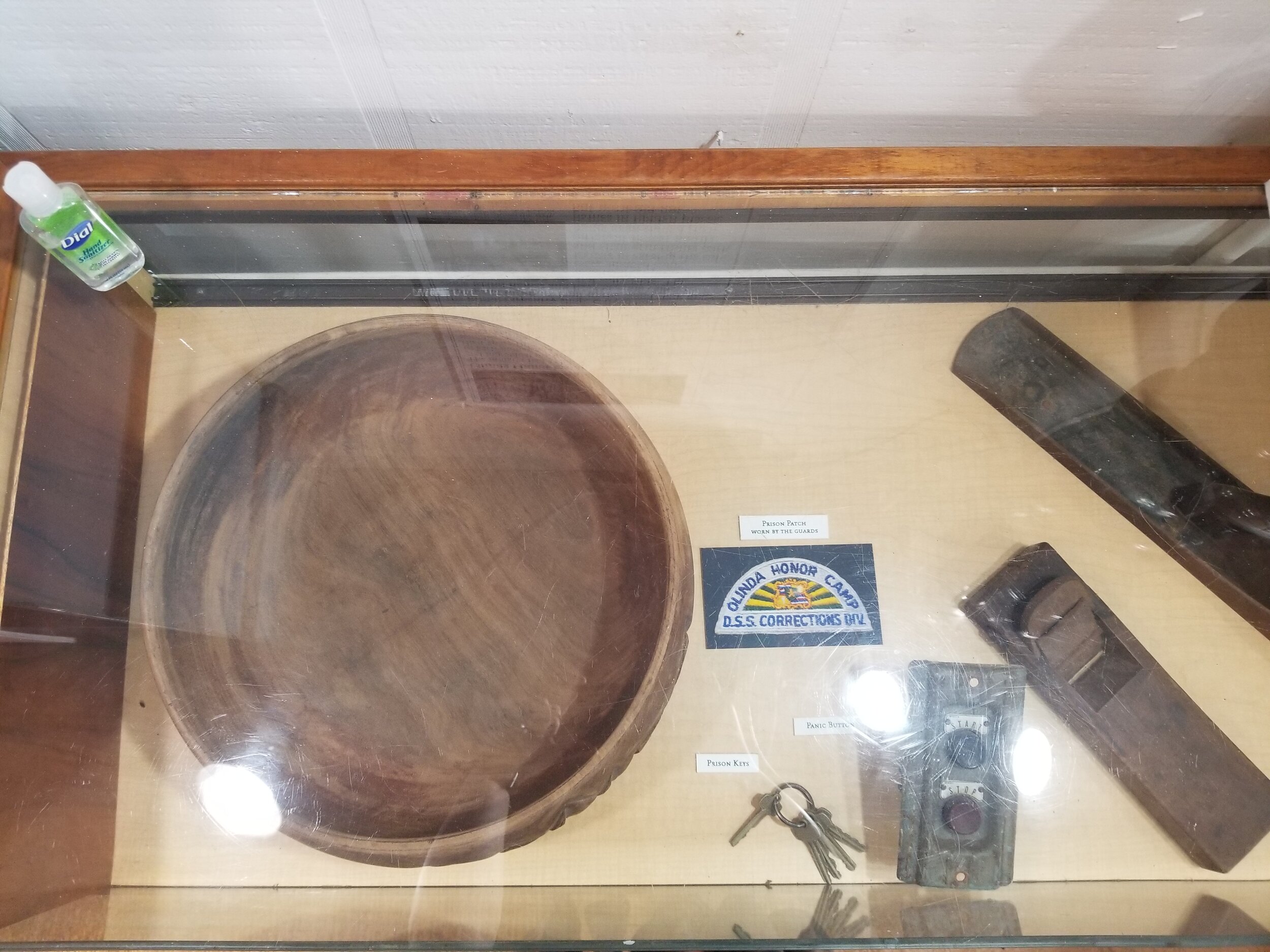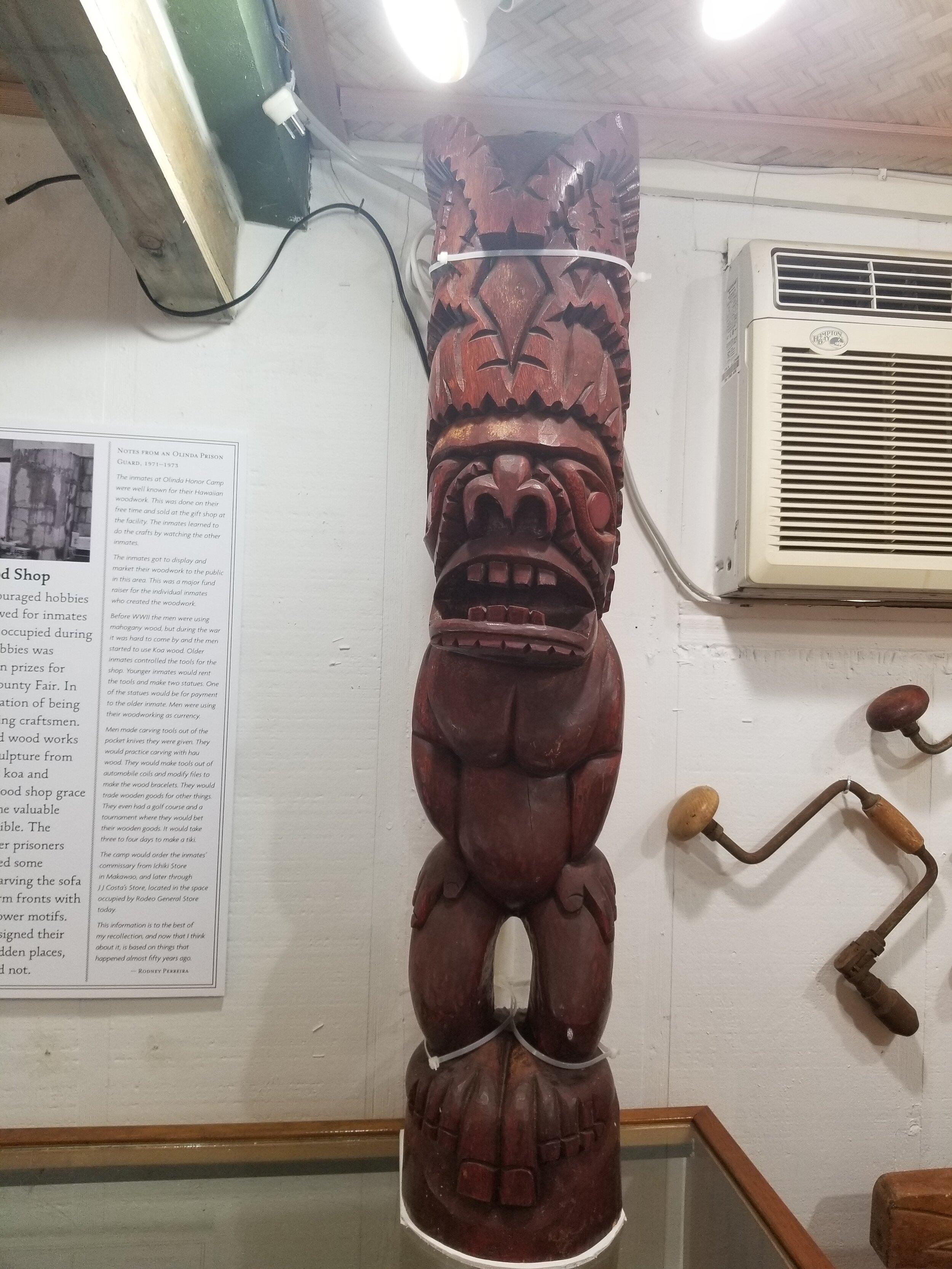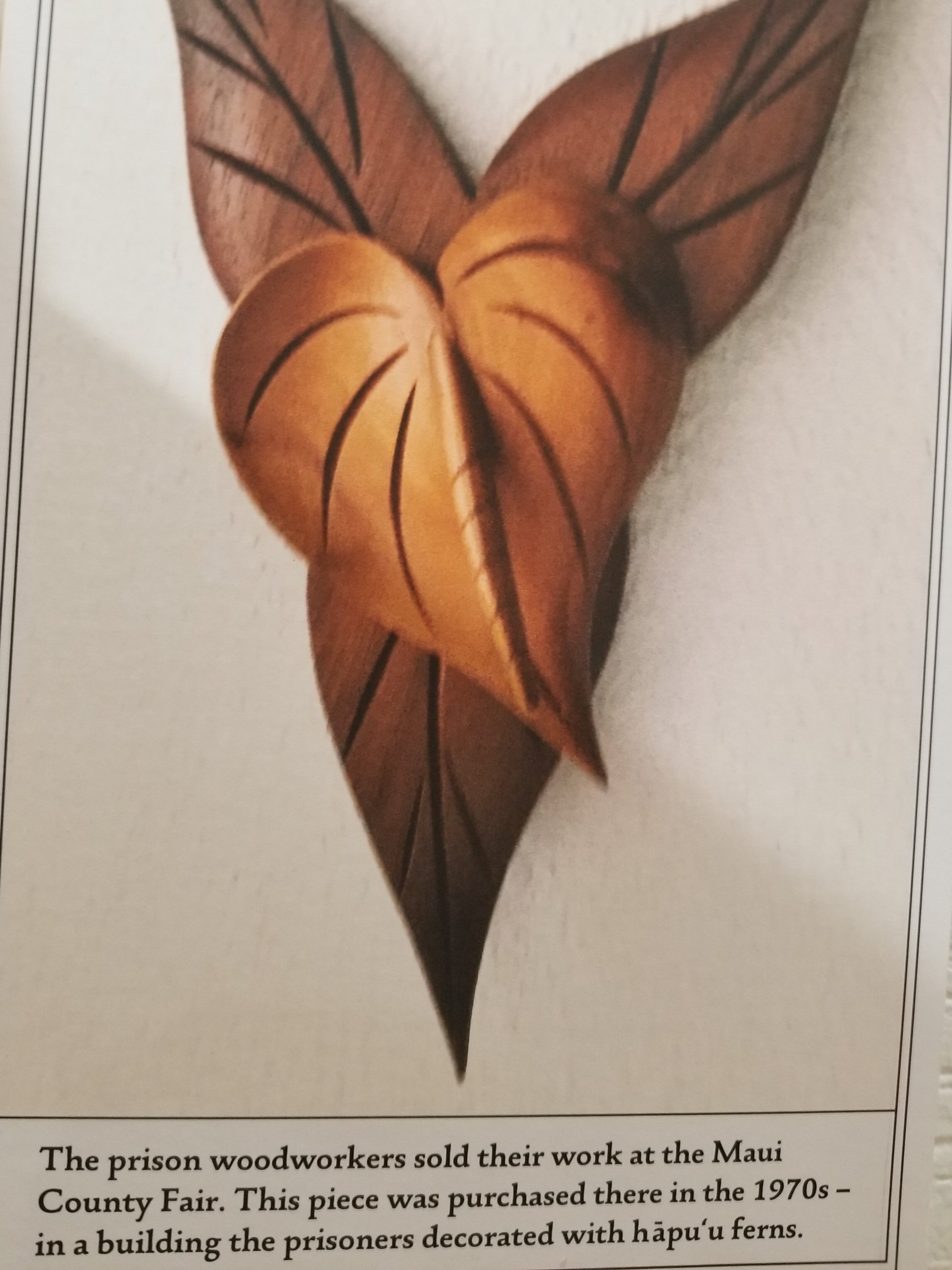The Olinda Prison: From Prison to Honor
1926-1973
Nestled on the quiet mountainside of Haleakala¯ sits the old Olinda Prison Camp. This facility served as a rehabilitation center for inmates from 1926 to 1973. The men that came to this camp were young first offenders and the population ranged from 24 to 40 inmates during its operation. The camp was referred to as the Olinda Project and was intended to help rehabilitate inmates by giving them good work habits and positive attitudes.
Notice the simple barbed-wire fence. A Honolulu Star Bulletin article from 1957, when these new buildings were completed, commented that visitors “often think they are passing a country resort.”
The camp was located in Olinda to help eradicate gorse (Ulex europaeus), an invasive weed that was introduced to Hawai‘i at the beginning of the 20th century. This thorny flowering bush took over vast areas on the Island of Maui and was starting to threaten the forest reserve section of Olinda. Senator Harold W. Rice helped to establish the prison camp and appropriated the sum of $12,000 for the fight against the invasive weed. Ranchers and farmers were appreciative of the inmates’ help in clearing the invasive weed from their fields. By 1948 the inmates had gorse under control in the area.
A West Maui SWCD crew completes work on a scenic lookout at Papanalohoa. Pictured from left: G. Paresa, D. Nobriga, D. (Buddy) Nobriga, James Nobriga (kneeling), and two Olinda Honor Camp workers
By the 1950s, the inmates were branching out and learning new skills. These new skills included repairing buildings, farming their own food, surfacing roads, and fencing. Inmates collaborated with the Maui Waterworks Board and Territorial Public Works Department repairing roads in the Kula and Waikamoi Forest Reserve. Work was also done on the West Maui Kahakuloa Highway. The community praised the inmates for their work around the community. Inmates were also encouraged to gain individual growth through hobbies such as woodworking.
Notes from an Olinda Prison Guard, 1971–1973
Initially Olinda Honor Camp had a large farm growing vegetables, a piggery, and a cattle operation occupying about sixty acres. The surplus of the farm went to the hospital, some schools and other prison facilities.
The camp was very involved in the Olinda community. Any time trees fell on the roadways, the camp would respond to remove the trees. Downed trees on private property were also cleared upon request of the property owners. One of my first assignments at the camp was to take a crew and sweep Olinda Road from the camp to the arena.
The camp did gorse control through a federal program. We would go onto private property with equipment and poison the gorse. This was really nasty work.
The camp was also involved in building the Kahakuloa road around the north side of West Maui, from Kapalua to Wailuku. There was a regular crew that would work ten hour days four days a week on that project. Prior to that they also worked on the Kahikinui road going toward Kaupo.
The camp also worked on the Haili‘imaile Park. The County of Maui did the grading and the inmates planted the grass and the finish landscaping. Hale Aloha Park in Kahului was also a project that inmates were involved in.
I remember the inmate pay scale was .07 an hour, .12 an hour, and the operator of the D-8 tractor was .25 an hour.
The Annual County Fair utilized inmate labor. The inmates would help set up bleachers, erect fencing, and whatever general labor was needed. They also set up the Hawaiian Village display in the Hawaiiana building. The inmates would set up the rock walls, haul hau trees from the forest and plant them in the building to make the display authentic.
- Rodney Perreira
Olinda Honor Camp Wood Shop
The inmates had a club that encouraged hobbies and individual growth. This allowed for inmates to earn money and to keep them occupied during their spare time. One of these hobbies was woodworking. Many inmates won prizes for their work at the annual Maui County Fair. In the 1950s the camp had the reputation of being a place that had good wood working craftsmen.
Many Maui families have prized wood works such as tiki, calabash bowls and sculpture from the prison carpentry shop. Carved koa and mahogany furniture built in the wood shop grace some island homes and have become valuable and collectible. The woodworker prisoners were allowed some leeway in carving the sofa and chair arm fronts with different flower motifs. Some even signed their names in hidden places, but most did not.
Notes from an Olinda Prison Guard, 1971–1973
The inmates at Olinda Honor Camp were well known for their Hawaiian woodwork. This was done on their free time and sold at the gift shop at the facility. The inmates learned to do the crafts by watching the other inmates.
The inmates got to display and market their woodwork to the public in this area. This was a major fundraiser for the individual inmates who created the woodwork.
Before WWII the men were using mahogany wood, but during the war it was hard to come by and the men started to use Koa wood. Older inmates controlled the tools for the shop. Younger inmates would rent the tools and make two statues. One of the statues would be for payment to the older inmate. Men were using their woodworking as currency.
Men made carving tools out of the pocket knives they were given. They would practice carving with hau wood. They would make tools out of automobile coils and modify files to make the wood bracelets. They would trade wooden goods for other things. They even had a golf course and a tournament where they would bet their wooden goods. It would take three to four days to make a tiki.
The camp would order the inmates’ commissary from Ichiki Store in Makawao, and later through J J Costa’s Store, located in the space occupied by Rodeo General Store today.
This information is to the best of my recollection, and now that I think about it, is based on things that happened almost fifty years ago. — Rodney Perreira
Throughout the Olinda Prison Camp’s operation, it was constantly in need of proper facilities for the inmates. A handful of inmates took advantage of the poor conditions of the camp and tried to escape. There were new developments in the 1950s which created enough housing for 60 inmates in three dorms, along with a room that held the three inmates who were kitchen workers. In 1962 the prison was renamed the Olinda Honor Camp. However, in 1973 the camp closed due to the declining prison population and the lack of people willing to work in an isolated location.
The camp property was transferred to the Department of Land and Natural Resources in 1979. Eventually, the camp was repurposed and became the home for the Captive Breeding program in 1986 for endangered native birds and is still used for that purpose today.
Memories of an Olinda Prision Guard
One night an inmate was breaking out of solitary confinement by hitting his body against the door multiple times. It was later learned that he was trying to break out because he wanted two aspirin. After the correctional officer gave him what he wanted, he calmed down. The inmate had damaged the door so much that the staff could not open it, so they gave the inmate a crowbar to pry open the door. This could have been a problem because the guards did not carry weapons but everything turned out okay.
It is important to have control in the prison.
I was the youngest guard when I worked there, twelve to eighteen months before it closed. It paid good money. The community loved the prison. If a tree fell in someone’s yard, the inmates would come and fix it.
There was a baseball field across the way from the prison. When there was a lock down, the inmates would cut grass at the baseball field. This was seen as punishment.
None of the correctional officers had weapons but the inmates were able to handle tools. One time a chief guard was locked in a cell and people escaped. There was only one guard working at night. After that, we had to start checking in every hour.
The inmates came from all over the Islands. There was a 16% return rate with the inmates. The camp helped reintegrate them into society. After serving time in the camp, they were able to get stable jobs.
They came to this camp as punishment, and I did not want to punish them more. Some of them could not be rehabilitated, and some needed a second chance.
- Rodney Perreira, Guard from 1971-1973
The Stairway to Solitary Confinement
The Solitary Confinement Cell
